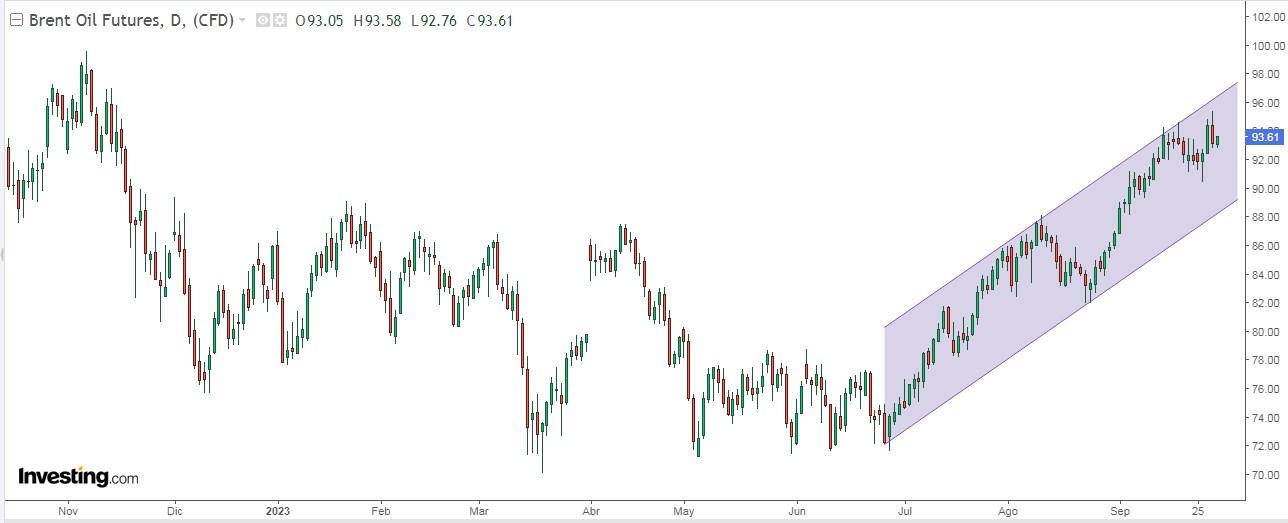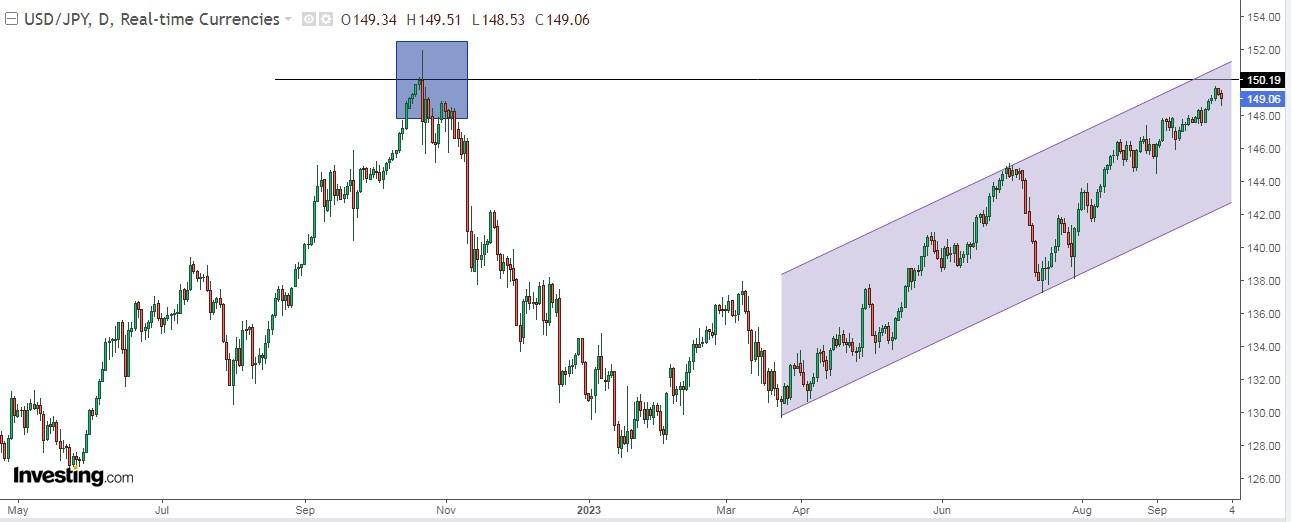- Despite the ongoing challenges in the market, there are still reasons to be optimistic.
- Historically, we're entering a period of strong performance in for the S&P 500.
- With that in mind, we listed 3 reasons that show that Q4 may not be as bad as we are expecting right now.
- October tends to be a pretty decent month overall, with November and December being historically very strong.
- The fourth quarter is the best quarter of the year almost 80% of the time with an average return of +4%, doubling the performance of the next best quarter.
- And that's not all; when the S&P 500 is up between +10% and +20% and reaches the fourth quarter, on average it is up +5%. In other words, if the year is going strong at the beginning of the last quarter, it usually ends the year even stronger.
-
October 26: ECB decides on interest rates.
-
November 1: the Fed decides on interest rates. (Potentially the last one of the cycle)
-
December 13: the Fed decides on interest rates.
-
Dec. 14: ECB decides on interest rates.
-
Nasdaq +26.30%
-
Nikkei Japan +22.09%.
-
FTSE MIB Italy +19.13%.
-
Ibex 35 Spain +14.57%
-
S&P 500 +11,68%
-
Dax Germany +10,51%
-
Cac France +10,22%
-
Euro Stoxx 50 +10,04%
-
FTSE 100 UK +2.10% +2.10%
-
Dow Jones +1,09%
We were well aware of September's historical reputation as a challenging month for the stock market. In fact, when we examine data dating back to 1950 for the S&P 500, it emerges as the most unfavorable month of the year.
Moreover, just last week, I pointed out that the period spanning from September 20th to the 30th, inclusive, typically exerts a negative impact on the index. To be precise, it tends to experience a decline of approximately -1.92%. As of the market's close on the 28th, the S&P 500 has dipped even further, registering a decrease of -3.27%.
However, now we are going into an interesting period, as the next three months tend to be historically quite strong. While the current macroeconomic setup keeps flashing warning signs, here are three reasons to remains optimistic in the months ahead:
Nevertheless, it's crucial to remember, as I often emphasize, that all this information is rooted in historical data. While undeniably intriguing, it remains essential to bear in mind that past performance does not guarantee future results. Still, in many cases, as we well know, history rhymes (Mark Twain).
For the time being, the focus is on the following dates as we await further clues from Central Banks on the pace of rate hikes:
That said, let's assess two reasons that could dampen market sentiment in spite of the positive aforementioned historical trends: the rise in oil prices and the global Forex market.
Can Oil Sustain Current Uptrend? 
In recent months, Saudi Arabia and Russia have managed to amass billions of dollars in oil revenues, even while reducing their oil production. This accomplishment can be attributed to their deliberate production cuts, which have effectively driven up crude prices.
Consequently, the gains in oil prices have more than compensated for the decrease in supply.
This surge in revenue holds significant advantages for both nations. For Saudi Arabia, it offers crucial financial support for their ambitious domestic projects. Simultaneously, it aids Russia in sustaining its financial commitments, including the ongoing situation in Ukraine.
What's noteworthy is that the global demand for oil has now exceeded pre-pandemic records in the year 2023. Earlier this month, the president of the International Energy Agency projected that oil demand would reach its peak during this decade, a shift from last year's expectation of it happening by 2030.
Meanwhile, the CEO of China's state-owned oil company, CNOOC (HK:0883), has remarked that Chinese demand for crude oil may also reach its peak this year. It's worth recalling that China has been responsible for half of the global increase in oil demand over the past 25 years.
Drums of Intervention in the Yen?

Japan's government could potentially step into the currency markets once more should the yen surpass the $150 threshold.
Notably, Sakakibara, often referred to as "Mr. Yen" due to his historical impact on currency matters, oversaw over a dozen interventions during his tenure as Vice President for Finance. He emphasizes that the critical level to watch is $155, as breaching it would raise significant concerns within the government.
It's worth remembering that Japan executed more than $60 billion worth of interventions last year, primarily focusing on the 146 and 152 levels.
In the meantime, the Japanese currency continues to depreciate against the US dollar, reflecting the greenback's strengthening trend driven by expectations of prolonged high-interest rates.
Investor sentiment (AAII)
Bullish sentiment, i.e. expectations that stock prices will rise over the next six months, fell 3.5 percentage points to 27.8%. Bullish sentiment has fallen 14.4 percentage points over the past three weeks and remains below its historical average.
Bearish sentiment, i.e., expectations that stock prices will fall over the next six months, increased 6.3 percentage points to 40.9% and remains above its historical average of 31%.
Stock Market Rankings in 2023
Here's how the major stock exchanges are ranked so far in 2023:
***
Disclosure: The author doesn't hold any of the securities mentioned in this report.

